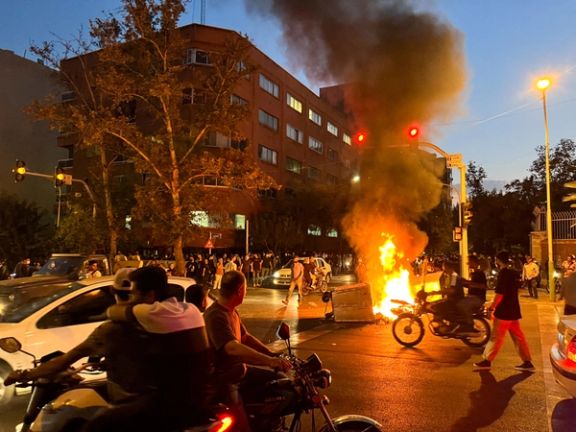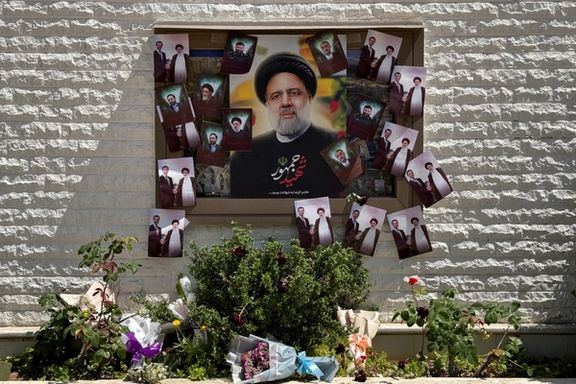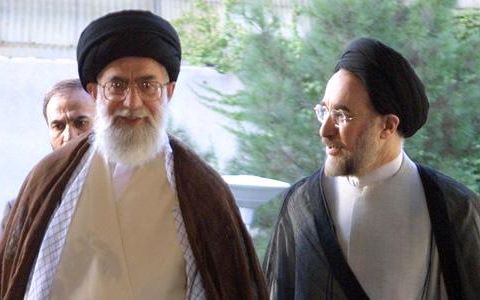15 Dissidents in Iran Face Imminent Execution, Amnesty Warns

Amnesty International has warned of the imminent threat of execution for at least 15 individuals involved in the protests, following what it describes as "grossly unfair sham trials."

Amnesty International has warned of the imminent threat of execution for at least 15 individuals involved in the protests, following what it describes as "grossly unfair sham trials."
At least eight of these individuals, Amnesty says, are awaiting execution following their involvement in the "Woman Life Freedom" uprising in Iran.
Among them are Fazel Bahramian, Mahmoud Mehrabi, Mamousta Mohammad Khazrnejad, Manouchehr Mehman Navaz, Mehran Bahramian, Mojahed (Abbas) Kourkouri, Reza (Gholamreza) Rasaei and prominent rapper Toomaj Salehi.
In their guilty verdicts, they were accused of "enmity against God" (moharebeh), "corruption on earth" (efsad-e fel arz), and "armed rebellion against the state" (baghi).
"The authorities have severely violated their fair trial rights and subjected many to torture and other ill-treatment, including beatings, electric shocks and sexual violence," the group added.
According to Amnesty International, two additional individuals, Saeed Shirazi and Abolfazl Mehri Hossein Hajilou, were tried on capital charges, and at least five others are under investigation for serious offenses related to the protests.
The death of Mahsa Jina Amini in September 2022 at the hands of the regime’s “morality police” ignited a series of nationwide protests lasting for months, commonly referred to as the Woman, Life, Freedom movement. During this period, authorities reportedly killed at least 550 protesters and detained tens of thousands. The UN has since found Iranian authorities responsible for the physical violence that resulted in Amini's death.
Amnesty International reported last month that 853 people were executed in Iran in 2023, a record number in the last eight years, pointing out that the government uses execution as a tool of political repression and may continue to execute thousands more if the international community does not take action.

The first official report on the helicopter crash that killed Iran’s late President Ebrahim Raisi was published on Thursday. However, it did little to quell speculations surrounding the fatal incident.
Raisi was on a short flight back from the neighboring Republic of Azerbaijan last Sunday, when his helicopter went missing from radars. The crash site was located several hours later, along with bodies of Raisi and his minister for foreign affairs, Hossein Amir-Abdollahian.
Speculations, often conspiratorial in nature, mushroomed immediately after the news of the crash, long before Raisi and other officials were confirmed dead. More conjecture emerged in the following hours and days, mostly pointing fingers at Mojtaba Khamenei, the Supreme Leader’s eldest son who is widely believed to be the main contender to replace his father.
On Thursday evening local time, Iran’s general staff of the Armed Forces published a brief statement (with 6 articles) to present its ‘early’ finding and dissuade people from speculation.
“Some actions require more time for a definitive opinion...while some issues can be stated with certainty and are mentioned here,” the statement read, “no evidence of bullet impact or similar instances was observed in the remaining parts of the crashed helicopter…The crashed helicopter caught fire after hitting an altitude.”

This was perhaps the most significant part of the statement, attempting to convince the public that there was no outside attack or interference. It followed another broad remark conveying the same message: “The helicopter continued its pre-planned route and did not deviate from the designated flight path,” implying that the crash was indeed an accident, but offering no reasons for it –a technical problem, for instance, or human error.
The statement was met with skepticism or mockery. Lack of detail, or a rough storyline, at least, raised many more questions that it answered.
“The statement does not address any of the uncertainties surrounding the crash of Raisi’s helicopter,” Iranian journalist and commentator Jamshid Barzegar told Iran International. “All it does is to rid [Iran’s] armed forces of the little credibility that they had, [especially if] you put it alongside the staggering lack of coordination that was displayed at Raisi’s funeral.”
This sentiment was echoed by other analysts and some ordinary Iranians on social media, who judged the statement from ‘not much to offer’ to ‘all lies’, even though it stated clearly that large amounts of evidence had been gathered but “more time is needed to examine some parts and documents.”
Further statements, even with more evidence and detail, are likely to fail to convince ordinary Iranians, many of whom find it hard to trust official announcements –and are often actively looking for inconsistencies or ‘gaffes’ that would discredit the narrative.
This is partly at least due to the Islamic Republic’s long history of deceit which has all but completely eroded trust between the people and the state. And partly a backlash to the regime’s persistent dissemination of its own message and violent suppression of alternative ideas.
One such instance was the downing of a Ukrainian airliner in January 2020, when two missiles fired by the Revolutionary Guard air defense units around Tehran brought down the plane with 176 people on board. All perished in the crash. For three days, military and security officials denied any involvement and argued that it was a technical accident, until videos emerged showing the missiles hitting the plane.
“People are asked to ignore non-expert opinions based on speculations without accurate knowledge of the realities of the scene, or sometimes guided by foreign media in cyberspace and other platforms,” the statement concluded.

Iran’s ‘Reform Front’ says they have not decided whether to field a candidate or participate in the Iran’s upcoming June presidential election, for a successor to Ebrahim Raisi who died in a helicopter crash on May 19.
Media in Tehran quoted Javad Emami, the spokesperson of the Reform Front and an individual close to former President Mohammad Khatami as saying that ‘reformist’ politician will discuss the issue of the elections on Sunday.
The core of the Iranian clerical regime led by Supreme Leader Ali Khamenei has completely sidelined the ‘reformists’ in recent elections. While they are loyal to the essence of maintaining the Islamic Republic as the country’s political system, they have been asking for reforms, such as more media freedom and less interference by the military.
Khamenei, by stage-managing elections in 2020 first packed the parliament by hardliners and then helped elect Ebrahim Raisi, a loyal cleric, to the presidency in 2021. Hundreds of candidates were also disqualified in this year’s March parliamentary elections, further solidifying control by Khamenei loyalists.
Emami stated that “The conditions of the election depend on how the government handles the June elections. These days, the country is in crisis, and we hope to see the correct path for the elections demonstrated as soon as possible.”
The spokesperson of the ‘Reform Front’ was apparently alluding to the fact that all politicians and media await signs to see what Khamenei intends to do during the elections – allow a diversity of candidates or repeat the closed model used in 2021 to elect Raisi.

A former Australian hostage, held in Iran for over two years, has criticized Western governments for their condolences over the death of Iran’s president, saying they lack leadership in denouncing “a man widely regarded to be complicit in mass murder.”
In an op-ed for the Australian Age daily, Australian scholar Kylie Moore-Gilbert criticized recent statements made to the Iranian government by several Western governments, EU officials, and NATO.
She called their condolences "tone deaf to the prevailing view inside Iran and the diaspora that Raisi was a tyrant with an inordinate amount of blood on his hands."
President Ebrahim Raisi and seven others, including Foreign Minister Hossein Amir-Abdollahian, died in a helicopter crash near the Azerbaijan border in northwestern Iran last Sunday.
Raisi, often referred to as the “Butcher of Tehran,” led a "Death Commission" that oversaw the extrajudicial execution of thousands of Iranian political prisoners in 1988. His tenures as judicial chief and later as president were marked by authoritarian measures and brutal crackdowns on dissent.
Moore-Gilbert, a lecturer on Islamic studies, also criticized the Australian government for repeatedly failing to firmly oppose Iran's terrorism sponsorship, hostage-taking of Australians, and transnational repression.
In 2018, she was detained by the Islamic Revolutionary Guards (IRGC) in Iran on alleged espionage charges and sentenced to 10 years. She was released in 2020 in a prisoner exchange.
Australia has faced growing calls since 2022 to list the IRGC as a terrorist unit but has resisted. On Friday, it added the Iran-backed Yemeni Houthis to its terrorist list.

The who's who of Iran-backed terror groups met in Tehran on the sidelines of Iranian President Ebrahim Raisi's funeral Wednesday.
IRGC Chief Commander Hossein Salami and Quds Force Chief Esmaeil Qa’ani met with the leaders and representatives of Hamas, Hezbollah, Palestinian Islamic Jihad, PFLP, Ansarullah (Houthis), and Iraqi Shia militant groups.
“Raisi's body was in the next room when they were talking,” Beni Sabti, a researcher in the Iran program at the Institute for National Security Studies (INSS) think tank, told Iran International. He used to serve as Persian spokesman for the Israeli government on Iranian issues.
The timing of the meeting speaks volumes, according to Sabti who believes it was partly propaganda to save face.
"Even (Syrian President) Bashar al-Assad didn't come. Even (Russian President Vladimir) Putin didn't come. So they had to meet someone. They had to produce this picture that we are acceptable. We have legitimacy in the Middle East and who they had?...The head of terrorist organizations," said Sabti.
During the meeting, the participants “reviewed the latest regional developments and emphasized the continuation of jihad until victory in Gaza is achieved,” according to IRGC-affiliated media outlets.
‘Iran's late foreign minister the chain to terror proxies’
"There’s a more important thing about this meeting: It was not about Raisi, it was about the foreign minister, [Hossein] Amir-Abdollahian."
Sabti called the late Iranian foreign minister the link between the Islamic Republic and their proxies in the Middle East.
"Most of us talk about Raisi, the president, but Raisi was the less important guy in that helicopter, or maybe in the whole foreign policy issues. For Iran, the main guy there was Amir-Abdollahian because he was a link and part of the chain. A chain from the Iran regime to these terror organizations," said Sabti.
Amir-Abdollahian had attended the inauguration of two dams near the border with Azerbaijan where Raisi met its president Ilham Aliyev, hours before the fatal helicopter crash.
On Feb. 9, the late foreign minister was in Beirut to show the Islamic Republic's support for Iran-backed Hezbollah, saying Lebanon's security affects Iran and the greater region. He was also welcomed by Hamas and the Palestinian Islamic Jihad.
On Feb. 13, Amir-Abdollahian met with the Hamas leader in Doha, Qatar, and reaffirmed Iran's support.
Despite Iran's denial of involvement in the October 7 massacre that killed nearly 1,200 mostly civilians, Tehran continued its public meetings with the leaders of these proxy groups.
Iran supports Hamas with $1 billion a year. The Islamic Republic also supports Palestinian Islamic Jihad with tens of millions and is providing Hezbollah with 70 percent of its budget, Sarit Zehavi from Alma Research Center said in a previous interview with Iran International.
Sabti said Amir-Abdollahian was successful at meeting with Middle Eastern countries that normalized relations with Israel through the Abraham Accords, willing to put aside ideology he said, for the sake of "destroying the relations between Israel and other countries."
"They put the ideology aside, and I don't know how Iran regime somehow convinced Taliban and Hamas, both of whom are Sunnis and from the Islamic Brotherhood. But somehow they all gathered around the same interests and they put the ideology aside," said Sabti.
He believes Wednesday's meeting between Iran and its proxies was a check-in on how to "continue Amir-Abdollahian's role and also to show them that the Iran regime is behind them. They will support them no matter that Amir-Abdollahian is there or not."
Selsky: A wake up call to the West
If a picture is worth a thousand words, the photo of Iran with its terror proxies, showed "how close they all are," said Alex Selsky, an advisor to the Middle East Forum and former advisor to Israeli Prime Minister Benjamin Netanyahu.
Selsky said the meeting shows the Iran-backed terror groups are "the soldiers of this [Iran] regime."
"They all came to show their loyalty and to mourn together with the ‘family’. So it just shows us how close all of them are," said Selsky.
Selsky said the photo should be a “wake-up call to the West.”
"I don't remember if we ever saw such a picture that shows visually that it's all one desk. It's all one headquarter. It's all one mission," he said.
"That proves, again and again, to the West...to the world. That's when they want to fight economic terror by Houthis. Or the terror by Hezbollah or Hamas. Who is the head? Who is the one that sends and gives the orders? And who is the one to be targeted? And if the West still doesn't understand it....yesterday is already late," said Selsky, referring to Iran as the head who executes all the orders and finances its proxies.
Selsky, an expert in the Middle East, believes the fatal chopper crash, whatever the cause, reflects poorly on the Islamic Republic and has likely impacted how much confidence its proxies have in their so-called "boss."
"I'm sure that many of the proxies look at their ‘boss’ right now and feel kind of disappointment."
"Any explanation to this accident," he said, "is bad for them [Iran]. Because if it was assassination by whoever did it, it shows the weakness. If the assassination comes from outside, it shows the weakness. If the assassination comes from inside, it shows the weakness and the splits and the rivalry within. If it was just an accident, it shows the weakness. Like they want to fight America and Israel? And they don't know to how to operate an old, small helicopter."
Iran's military chief of staff has ordered a probe into the cause of the helicopter crash, according to the ISNA news agency. However, a cause has yet to be determined.

Intense disputes continue as Iranian and Turkish officials debate which nation located President Ebrahim Raisi’s helicopter wreckage, with the Turkish Minister being the latest to weigh in on the issue.
Abdulkadir Uraloglu, Minister of Transport and Infrastructure, told CNN Turk TV that the Turkish drone Akinci found the wreckage, as the time and place of the Iranian-announced discovery corresponds to when and where the drone located it.
A helicopter carrying President Ebrahim Raisi and seven others, including foreign minister Hossein Amir-Abdollahian crashed near the border with Azerbaijan on Sunday, killing everyone on board.
Uraloglu said Iranian authorities contacted them for help but did not initially mention that the issue concerned Raisi. The Turkish official said they “successfully did what was asked of” them. “As neighbors, we rushed to help the country that requested assistance, and we did so completely and correctly.”
On Wednesday, the General Staff of Iran's Armed Forces played down the significance of the Turkish drone's involvement in locating the crash site, emphasizing the effectiveness of its drones instead as the issue became one of humiliation for the regime, currently blamed for a delayed and ineffective response to the crash of its president.
Iran's military stated that despite Turkey deploying a drone with advanced technology, adverse weather conditions hindered its effectiveness in locating the crash site.
Iran's own advanced drones were inaccessible in the Indian Ocean at the time but were recalled and ultimately located the crash site where the bodies of the president, foreign minister and other officials were recovered, the Iranian military statement said.
Earlier this week, Turkish President Recep Tayyip Erdogan also emphasized that the Akinci drone was dispatched at the Iranian government's behest. Erdogan highlighted the drone's resilience in adverse weather and detailed its extensive search efforts, which covered 2,100 kilometers over seven and a half hours.
Reports from Turkish media stated that following the Turkish drone's identification of the helicopter wreckage and heat signatures indicative of the crash site in Iran’s East Azerbaijan Province, Iranian search teams successfully located the downed helicopter and the bodies of Raisi and others in the mountainous area.
Turkish Anadolu news agency also broadcasted a live operation of the Turkish drone which was watched by over 2.5 million people tracking the operational data and flight path live. As it returned to the base, Akinci drew a crescent and a star in the shape of Turkey's flag.
Despite data from the Turkish drone corroborated by some Iranian news outlets, Pir Hossein Kolivand, head of the Iranian Red Crescent Society, dismissed claims of foreign assistance as mere speculation. Kolivand emphasized the Iranian team's perseverance through challenging conditions, asserting that their drone led them to the exact crash site within 40 minutes of locating the wreckage at an altitude of 2,500 meters.
In a sign of potentially souring relations as a result of the Iranian snub, Turkish media reported on Wednesday that President Erdogan would travel to Iran on Thursday for Raisi’s funeral. However, the Turkish government’s Directorate of Communications Center for Countering Disinformation dismissed these reports, stating that Erdogan has no plans to visit Iran in the near future.
Both Iran and Turkey have a large drone arsenal, a major export for both nations. Iran has been accused by Western powers of providing drones to Russia for its war in Ukraine.
As of mid-2022, Iran has supplied Russia with a substantial number of kamikaze Unmanned Aerial Vehicles (UAVs), which are being used to target civilian infrastructure and cities. Also, drones have been incorporated into large-scale missile attacks, overwhelming Ukrainian air defenses. Turkish drones have also been used by Azerbaijan in the years-long conflict against Armenia, in addition to Ankara’s NATO allies in Europe, Arab countries in the Gulf and North Africa, and sub-Saharan African countries.